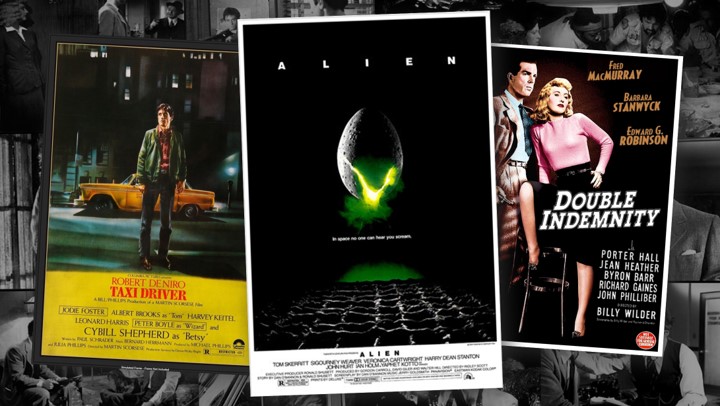NPS, SURVEYS AND ISHOKU-HADA
WHAT CAN CX LEARN FROM...
SURPRISING INSIGHTS BY BRINGING IN OFF-BEAT CASES
SURPRISING INSIGHTS BY BRINGING IN OFF-BEAT CASES
LONG READ
NPS, SURVEYS AND ISHOKU-HADA
DO YOU KNOW ME AT ALL?
It’s the bare essential of what a survey is about. And it often gets overlooked. The heart, the promise and meaning of a survey is that you are reaching out. Not perse to ask feedback on what you can do better, or acknowledgement where you deliver on your promise. But to recognize the customer’s importance to you. Showing you know them and care about them.
With this in mind, reality is cringing. Companies are blaming low response rates on ‘survey fatigue’. The audience has so-called been overwhelmed by surveys and do not care to fill them out any longer. The knee-jerk reaction is to send out more surveys, because of course companies do need statistically significant response volumes. Sounds familiar?
And it is anything but true. It is the companies themselves to blame. They seem to ignore a cardinal rule: is it genuine? Do you really care about me? Do you know me at all? Unfortunately the answer is: no. Companies are sending out surveys that are one-size-fits-all and one-time-fits-all. And virtually all lack action. Any feedback apart from the scores seems to be ignored. Or, at the very least companies are not sending any response to it.
That is not genuinely being interested in someone. Instead, it is baiting customers to be one of the scores needed to quantify performance.
People instinctively recognise when they’re baited by bad surveys. They’re a number, needed for a number.
Let’s side-step for a moment and visit Japan. I’ve always been enamoured by Japanese culture that is at once beautiful, innovative, traditional, modern, eccentric and sometimes downright mystifying and strange. One of the truly fascinating aspects for me is how deeply the visual aspect of communication is steeped in daily life.
The Japanese style for business communication is unique, and borrows from graphic novels like manga and anime (which in turn are based on a long history of Japanese art), games and other pop culture. See for instance an explanation I found of how NPS works (you can see the picture top right in the header). You wouldn’t find it anywhere else in the world.
As communication goes, this explanation or brochure is designed by a company and is aimed at their customers. But let’s change direction and look at fashion, as that is how consumers express themselves to others… including companies (if they’re smart to recognise). And when it comes to fashion, the streets of Tokyo are filled with spectacular fashion statements.
Gyaru is a Japanese fashion subculture (the term is a transliteration of the English slang word ‘gal’), It is an umbrella term for a astonishing variety of styles, substyles, sub-substyles and micro-styles. With names like Ganguro, Manba and Kogyaru and many more, every single one has its own unique design, make-up, costumes, accessories and devout following. It’s just mindblowing.
From artificial deep tanned skin, glitter and bleached hair (Ganguro) to the overtly sexy outfits and elaborate, colourful dresses with bouffant hairstyles (Manba) to one you actually might recognize from pictures you’ve seen, the obsessive dressing up in Japanese school uniforms (Kogyaru).
It’s a mystifying world, and I’m hooked.
The one that I especially like is Ishoku-hada. It is eye-candy to the extreme. The name translates as “unique skin” or “unusual skin”. It is as if the participant has physically dipped herself in colourful paint. In an interview the creator of this style, model and DJ Miyako Akane, stated she ‘longed for the interesting skin tones seen in video-games, anime, movies and the idea of extraterrestrial life’. But, on a deeper level she makes a compelling statement against stereotyping, race, beliefs and prejudices. In her words: ‘by changing our skin colour or painting it, we get to liberate ourselves. It is therapy through make-up.’
And now, you are sending these Ishoku-hada players your boring and one-size-fits-all corporate survey. Let that sink in…
Yes, this is abrupt haul back to the topic of sending out surveys. Intentionally so. If you’ve been as intrigued and drawn in this other world as I am, it makes reality all the more jarring. How can a survey that is designed to appeal to e-ve-ry-one ever resonate with this group?
Of course, you can argue you don’t need to appeal to this specific group. I mean, chances are that your company would not have this Japanese subculture as customers. But that is not the point. I’m highlighting this specific group because they are so easy to highlight. With their strangeness, other-worldliness, dedication and beauty it is easy to recognise them. And therefore easy to remember.
They serve as a reminder for any group you have in your customerbase. because there are loads of groups that you do not reach with the standard questions of a standard survey. It doesn’t appeal, isn’t relevant, and it shows a startling lack of understanding. Yet remember, they are your customers.
It’s for this very reason that in the NPS Masterclass there’s an entire module dedicated to surveys. The concept, the promise, the design, but especially the endless possibilities to create more resonating and meaningful interactions. To steer away from analyses terror.
In other words, stubbornly sending out your one-size-fits-all surveys is not only getting you low-quality responses (if at all), but even worse: it is damaging the relationship with your customers. It’s excrutiatingly obvious you can’t be bothered to know or understand even the slightest bit of who they are and what they deem important. They’re just a number to you.
Paradoxically, an NPS survey is meant to gauge how loyal your customers are. Yet by sending out your stupid one-size-fits-all surveys, you trigger them leaving.
So… start regarding surveys as a means to acknowledge your customers and see it as a means to build a relationship, a conversation. That means you need to have a general base, and build in diversification.
It is really not that difficult to have one overall design for a survey that captures what you’d like to know about the customer’s experience. About some touchpoint details, and about other corporate strategy linked objectives. Keep these questions the same in every survey so can compare. But, leave room to then design different sets of questions, or just to use different wordings. As long as they are specifically targeted to a few different groups that you have identified as valuable.
This might (trust me, it will) take you a proper fight within the organisation to realise.
You’ll face colleagues that live by the notion that every single question or data point should be comparable across every single customer segment. From an analytical point of view, sure. But is quantifying every single detail really worth shattering your brand promise and alienating customers by serving up something bland and unappealing?
Instead, you argue for bringing in specific questions aimed at specific group, with the aim to specifically understand them properly. Asking them questions that are uniquely relevant to them. And allowing you to act and design improvements for that (valuable) group alone.
It will give you feedback of the highest quality. And it establishes you as a company that understands these specific customers. You know who they are. You speak their language. You share and cater to their interests. So go all out and use the right vocabulary and tone.
Is an important segment of your customer base keen on street language? Adopt it and include for example ‘dude’, ‘GOAT’ or whatever is right. Adopt the formal terminology of lawyers’ idiom if your product or service serves lawfirms. Or in case you’re tapping into the lucrative culinairy consumer segment, embrace the foodie jargon like ‘braising’, ‘deglazing’ or ‘zest’. Words foreign for most, but immediately show you are part of the in-crowd for the people that you are addressing.
And partner up for it. Co-create with the customer segment you’re addressing to find out what communication style to use, because you don’t want to get this wrong. By the way, this is also a fantastic way to bond with this group.
From a functional, numerical. bland one-size-fits-all survey that customers are wary of.., to surveys that resonate, that cherish and establish a relationship. A conversation, with someone you know.
It just needs a change of mindset of what a survey actually is.
LONG READ
NPS, SURVEYS AND ISHOKU-HADA
DO YOU KNOW ME AT ALL?
It’s the bare essential of what a survey is about. And it often gets overlooked. The heart, the promise and meaning of a survey is that you are reaching out. Not perse to ask feedback on what you can do better, or acknowledgement where you deliver on your promise. But to recognize the customer’s importance to you. Showing you know them and care about them.
With this in mind, reality is cringing. Companies are blaming low response rates on ‘survey fatigue’. The audience has so-called been overwhelmed by surveys and do not care to fill them out any longer. The knee-jerk reaction is to send out more surveys, because of course companies do need statistically significant response volumes. Sounds familiar?
And it is anything but true. It is the companies themselves to blame. They seem to ignore a cardinal rule: is it genuine? Do you really care about me? Do you know me at all? Unfortunately the answer is: no. Companies are sending out surveys that are one-size-fits-all and one-time-fits-all. And virtually all lack action. Any feedback apart from the scores seems to be ignored. Or, at the very least companies are not sending any response to it.
That is not genuinely being interested in someone. Instead, it is baiting customers to be one of the scores needed to quantify performance.
People instinctively recognise when they’re baited by bad surveys. They’re a number, needed for a number.
Let’s side-step for a moment and visit Japan. I’ve always been enamoured by Japanese culture that is at once beautiful, innovative, traditional, modern, eccentric and sometimes downright mystifying and strange. One of the truly fascinating aspects for me is how deeply the visual aspect of communication is steeped in daily life.
The Japanese style for business communication is unique, and borrows from graphic novels like manga and anime (which in turn are based on a long history of Japanese art), games and other pop culture. See for instance an explanation I found of how NPS works (you can see the picture top right in the header). You wouldn’t find it anywhere else in the world.
As communication goes, this explanation or brochure is designed by a company and is aimed at their customers. But let’s change direction and look at fashion, as that is how consumers express themselves to others… including companies (if they’re smart to recognise). And when it comes to fashion, the streets of Tokyo are filled with spectacular fashion statements.
Gyaru is a Japanese fashion subculture (the term is a transliteration of the English slang word ‘gal’), It is an umbrella term for a astonishing variety of styles, substyles, sub-substyles and micro-styles. With names like Ganguro, Manba and Kogyaru and many more, every single one has its own unique design, make-up, costumes, accessories and devout following. It’s just mindblowing.
From artificial deep tanned skin, glitter and bleached hair (Ganguro) to the overtly sexy outfits and elaborate, colourful dresses with bouffant hairstyles (Manba) to one you actually might recognize from pictures you’ve seen, the obsessive dressing up in Japanese school uniforms (Kogyaru).
It’s a mystifying world, and I’m hooked.
The one that I especially like is Ishoku-hada. It is eye-candy to the extreme. The name translates as “unique skin” or “unusual skin”. It is as if the participant has physically dipped herself in colourful paint. In an interview the creator of this style, model and DJ Miyako Akane, stated she ‘longed for the interesting skin tones seen in video-games, anime, movies and the idea of extraterrestrial life’. But, on a deeper level she makes a compelling statement against stereotyping, race, beliefs and prejudices. In her words: ‘by changing our skin colour or painting it, we get to liberate ourselves. It is therapy through make-up.’
And now, you are sending these Ishoku-hada players your boring and one-size-fits-all corporate survey. Let that sink in…
Yes, this is abrupt haul back to the topic of sending out surveys. Intentionally so. If you’ve been as intrigued and drawn in this other world as I am, it makes reality all the more jarring. How can a survey that is designed to appeal to e-ve-ry-one ever resonate with this group?
Of course, you can argue you don’t need to appeal to this specific group. I mean, chances are that your company would not have this Japanese subculture as customers. But that is not the point. I’m highlighting this specific group because they are so easy to highlight. With their strangeness, other-worldliness, dedication and beauty it is easy to recognise them. And therefore easy to remember.
They serve as a reminder for any group you have in your customerbase. because there are loads of groups that you do not reach with the standard questions of a standard survey. It doesn’t appeal, isn’t relevant, and it shows a startling lack of understanding. Yet remember, they are your customers.
It’s for this very reason that in the NPS Masterclass there’s an entire module dedicated to surveys. The concept, the promise, the design, but especially the endless possibilities to create more resonating and meaningful interactions. To steer away from analyses terror.
In other words, stubbornly sending out your one-size-fits-all surveys is not only getting you low-quality responses (if at all), but even worse: it is damaging the relationship with your customers. It’s excrutiatingly obvious you can’t be bothered to know or understand even the slightest bit of who they are and what they deem important. They’re just a number to you.
Paradoxically, an NPS survey is meant to gauge how loyal your customers are. Yet by sending out your stupid one-size-fits-all surveys, you trigger them leaving.
So… start regarding surveys as a means to acknowledge your customers and see it as a means to build a relationship, a conversation. That means you need to have a general base, and build in diversification.
It is really not that difficult to have one overall design for a survey that captures what you’d like to know about the customer’s experience. About some touchpoint details, and about other corporate strategy linked objectives. Keep these questions the same in every survey so can compare. But, leave room to then design different sets of questions, or just to use different wordings. As long as they are specifically targeted to a few different groups that you have identified as valuable.
This might (trust me, it will) take you a proper fight within the organisation to realise.
You’ll face colleagues that live by the notion that every single question or data point should be comparable across every single customer segment. From an analytical point of view, sure. But is quantifying every single detail really worth shattering your brand promise and alienating customers by serving up something bland and unappealing?
Instead, you argue for bringing in specific questions aimed at specific group, with the aim to specifically understand them properly. Asking them questions that are uniquely relevant to them. And allowing you to act and design improvements for that (valuable) group alone.
It will give you feedback of the highest quality. And it establishes you as a company that understands these specific customers. You know who they are. You speak their language. You share and cater to their interests. So go all out and use the right vocabulary and tone.
Is an important segment of your customer base keen on street language? Adopt it and include for example ‘dude’, ‘GOAT’ or whatever is right. Adopt the formal terminology of lawyers’ idiom if your product or service serves lawfirms. Or in case you’re tapping into the lucrative culinairy consumer segment, embrace the foodie jargon like ‘braising’, ‘deglazing’ or ‘zest’. Words foreign for most, but immediately show you are part of the in-crowd for the people that you are addressing.
And partner up for it. Co-create with the customer segment you’re addressing to find out what communication style to use, because you don’t want to get this wrong. By the way, this is also a fantastic way to bond with this group.
From a functional, numerical. bland one-size-fits-all survey that customers are wary of.., to surveys that resonate, that cherish and establish a relationship. A conversation, with someone you know.
It just needs a change of mindset of what a survey actually is.
CX, JAWS AND SPACE
WHAT CAN CX LEARN FROM...
SURPRISING INSIGHTS BY BRINGING IN OFF-BEAT CASES
SURPRISING INSIGHTS BY BRINGING IN OFF-BEAT CASES
LONG READ
CX, JAWS AND SPACE
HOW SIMPLICITY IS REALLY DIFFICULT
So this is something from the Business Storytelling Masterclass. It’s focused on 1 of the 3 core foundational elements of storytelling: Simplicity. Simply put: before you can tell any story, anything about your programme or initiative, or present what your team is doing, you need to strip it down. To the bare essentials.
There is a good reason the number one question I get asked is ‘How do I make it work in the organisation?’ Turning all your expertise, experience, plans and ambitions to tangible success is difficult. All too often I see clever people making clever plans based on clever insights… and yet, the organisation doesn’t listen. This is hard.
And this isn’t confined to a specific topic. Whether you are in CX trying to make a mark with your workshops, or in Digitalisation or Data trying to explain what it actually is you do, or in NPS defending some choices against an ignorant critic that half-baked repeats the first hit in Google.
Frustrating, right? Unfair even. But… maybe it’s just that your story isn’t convincing. Or interesting. Or too complex?
Being able to say in just a few words what you do is incredibly hard. Even more so in business as the usual corporate jargon makes it so easy for us to hide behind vague wordings. And you end up describing yourself let’s say as: “we excel at delivering high value connections”. Only to find that it’s just completely and utterly interchangeable with the next team, or worse, the Starbucks around the corner. On top of that, we’ve never learned narrative skills. At best we are literally describing what we do. And that’s never a good idea. It makes it dull and again does not position you any different than the next team that has the same task, right?
For cues we can take lessons from Hollywood. They excel at it. They are masters of ‘taglines’. Just looking at film posters you can spot beauties like ‘From the moment they met it was murder’ (from Double Indemnity, 1944) and “On every street in every city in this country, there is a nobody who dreams of being a somebody” (from Taxi Driver, 1976). Notice the evocative or sensory language they’re using. By any means it’s not just a functional description. Using words that conjure up images and feelings help the tagline come to life.
The most famous tagline of all, rated number one by all film buffs, is the tagline created for the movie Alien (1979): “In space, no one can hear you scream”. This really pushes all the buttons of your imagination. Immediately you are intrigued what will happen. You imagine the solitude of being alone in space. You feel queasy with anxiety as apparently something is going to make you scream.
Most interesting however is to note that this tagline is meant for the poster. For an external audience. But for this film, we also know what the tagline was for the internal audience. The audience that needed to be convinced on the idea and budget to make it. The internal tagline for Alien was: “Jaws, in space.” And again this is just a terrific tagline. In just 3 words the audience knows what it will get.
Of course it completely depends on the audience’s prior knowledge. They would have to know the movie ‘Jaws’. They would have to know its concept of a big monster lurking out there and man’s feeble, almost impossible attempts to slay it. They would have to be able to imagine that storyline in a science-fiction narrative. And, most important, they would have to know ‘Jaws’ was a blockbuster success and weigh their chances on repeating that success.
Obviously they could do all this. They were all movie executives. It’s their job! This internal tagline was completely aimed at the audience, their knowledge, and their interests. (I’ll share more on ‘Playing the Audience’ another time).
Just 3 words, and it captured their imagination, giving them a clear idea where you’re headed, and what they will get out of it.
So here’s your thing to do. How simple, elegant, unique, thought triggering can you be? Try it. Create a tagline. Say it out loud. If it helps, imagine a really cool filmposter of your team. What would the tagline on it be that draws audiences in?
Let me know, I’m curious.
LONG READ
CX, JAWS AND SPACE
HOW SIMPLICITY IS REALLY DIFFICULT
So this is something from the Business Storytelling Masterclass. It’s focused on 1 of the 3 core foundational elements of storytelling: Simplicity. Simply put: before you can tell any story, anything about your programme or initiative, or present what your team is doing, you need to strip it down. To the bare essentials.
This is hard. There is a good reason the number one question I get asked is ‘How do I make it work in the organisation?’ Turning all your expertise, experience, plans and ambitions to tangible success is difficult. All too often I see clever people making clever plans based on clever insights… and yet, the organisation doesn’t listen.
And this isn’t confined to a specific topic. Whether you are in CX trying to make a mark with your workshops, or in Digitalisation or Data trying to explain what it actually is you do, or in NPS defending some choices against an ignorant critic that half-baked repeats the first hit in Google.
Frustrating, right? Unfair even. But… maybe it’s just that your story isn’t convincing. Or interesting. Or too complex?
Being able to say in just a few words what you do is incredibly hard. Even more so in business as the usual corporate jargon makes it so easy for us to hide behind vague wordings. And you end up describing yourself let’s say as: “we excell at delivering high value connections”. Only to find that it’s just completely and utterly interchangeable with the next team, or worse, the Starbuck around the corner. On top of that, we’ve never learned narrative skills. At best we are literally describing what we do. And that’s never a good idea. It makes it dull and again does not position you any different than the next team that has the same task, right?
For cues we can take lessons from Hollywood. They excel at it. They are masters of ‘taglines’. Just looking at film posters you can spot beauties like ‘From the moment they met it was murder’ (from Double Indemnity, 1944) and “On every street in every city in this country, there is a nobody who dreams of being a somebody” (from Taxi Driver, 1976). Notice the evocative or sensory language they’re using. By any means it’s not just a functional description. Using words that conjure up images and feelings help the tagline come to life.
The most famous tagline of all, rated number one by all film buffs, is the tagline created for the movie Alien (1979): “In space, no one can hear you scream”. This really pushes all the buttons of your imagination. Immediately you are intrigued what will happen. You imagine the solitude of being alone in space. You feel queasy with anxiety as apparently something is going to make you scream.
Most interesting however is to note that this tagline is meant for the poster. For an external audience. But for this film, we also know what the tagline was for the internal audience. The audience that needed to be convinced on the idea and budget to make it. The internal tagline for Alien was: “Jaws, in space.” And again this is just a terrific tagline. In just 3 words the audience knows what it will get.
Of course it completely depends on the audience’s prior knowledge. They would have to know the movie ‘Jaws’. They would have to know its concept of a big monster lurking out there and man’s feeble, almost impossible attempts to slay it. They would have to be able to imagine that storyline in a science-fiction narrative. And, most important, they would have to know ‘Jaws’ was a blockbuster success and weigh their chances on repeating that success.
Obviously they could do all this. They were all movie executives. It’s their job! This internal tagline was completely aimed at the audience, their knowledge, and their interests. (I’ll share more on ‘Playing the Audience’ another time).
Just 3 words, and it captured their imagination, giving them a clear idea where you’re headed, and what they will get out of it.
So here’s your thing to do. How simple, elegant, unique, thought triggering can you be? Try it. Create a tagline. Say it out loud. If it helps, imagine a really cool filmposter of your team. What would the tagline on it be that draws audiences in?
Let me know, I’m curious.
CX, SILVER AND DOUBLE BLACK
WHAT CAN CX LEARN FROM...
SURPRISING INSIGHTS BY BRINGING IN OFF-BEAT CASES
LONG READ
CX, SILVER AND DOUBLE BLACK
HOW WELL-CHOSEN NAMES BRING IN CROWDS
A well-chosen name is priceless. It can give the sense of energy, ambition and help you create a stir. It can take you to the moon and back. Let’s put it like this: did you ever think of your initiatives as something that is exquisite, delicate and to be savoured? Probably not. But let’s start doing so today.
Consider the name W154 for a moment. It’s a puzzling name, right? At the very least it’s a functional name. Now, attach the name Mercedes-Benz to it and it will spark some curiosity. Still, it can be anything from some boring engine part to a read-out of a metric of some sorts. Now, see what happens when I now tell you the nickname for the W154 and all Mercedes’ racing cars: the “Silver Arrow”. All of a sudden a world opens up and your imagination takes off. In fact, the W154 is Mercedes-Benz’ very successful 1938 Grand Prix racing car designed by Rudolf Uhlenhaut, the head of Mercedes’ Racing in the days as described in the wonderful 1843 magazine of The Economist. It is a remarkable feat of aerodynamics, balance and speed (reaching a stunning 185mph) and set in an amazing design. Driver and European Champion Rudolf Caracciola liked it as ‘it was a car that needed finesse rather than force to handle.’
The nickname ‘Silver Arrow’ is perfect. So well chosen as it does not only reflect its features, but as well what it’s capable of achieving. It’s a sense of energy, ambition, force. It’s a promise.
I got chastised by a friend for using the English translation of the actual original German name “Silberpfeile”. It’s a mythical name. A name that is savoured. And indeed that friend tried to describe the importance of it, including that gesture you make when describing something almost intangible: thumb and fingers delicately pressed together and held up as if you’re describing that exquisite dish you recently had and you’re contemplating ways to describe it.
Now. Imagine someone is doing that whilst talking about your programme.
Chances are this struck you dumbfounded. But consider why it would be such a stretch of the imagination. Why would it be so impossible to have colleagues in your organisation talk about your initiative that way? I am a firm believer that this is something that should be your ambition. Because your programme will be better in its setup and approach. Because it will gain a bigger following in your organisation, and therefore more and better results. Because it challenges you to think bigger and be more ambitious. And all of that starts by giving it a name. A good name.
Let’s start with some pseudo-statistics. I estimate 99% of company programmes do not have a name (yes, I made up that percentage). Let’s be clear. A programme should not be a description. It should not be a functional summary of the activities you do. That is the equivalent of the W154. Attaching a name to it can help you signify or evoke a feeling or emotion that instantly shows people what you’re after.
You want to be about ‘finesse rather than force’? Give it the right name then.
Consider for instance calling your programme ‘‘Heartbeat’. It has the connotation of listening to customers or employees, finding their pulse, aiming for their hearts… and it opens up a whole array of possibilities to show your organisation what it is that you’re after. It opens up loads of possibilities for programme visuals and sparks new initiatives that fit this theme, including actually visiting a hospital and learning how they treat patients and then challenge the participants to apply those learnings to what you’re trying to achieve. And there are many, many other names to consider. Each with its own specific vibe, idea and promise.
Looking for names shouldn’t be confined to the overall programme. It can be used for any of your initiatives in it. What’s stopping you from calling your workshop a ‘Bootcamp’. Notice how immediately it gives off a wholly different vibe and sets other expectations? It most certainly will draw in a different crowd. Or start calling your report a ‘Compass’, the essential guide for the organisation on route to their destination i.e. strategy. You can easily see the visual as a logo, perhaps combined with some wild waters, mountain peaks or any other metaphorical hardship to overcome in your quest for customer centricity. It sets the stage to focus on the journey, rather than the ‘scores-only’ focus.
Or as yet another example, what about calling a training course the ‘Black Label’ training. How cool is that? Imagine the visuals you can use, take your inspiration from the Johnnie Walker label that is pitch black with gold lines. Even better, as Johnnie Walker upped their game as well by introducing the ‘Double Black’. You name your training that and guaranteed it will cause a stir, people wanting to know more about it and eager to sign up. No, not to sign up. Rather to ‘be a part of it’.
And now you’ve created something that transcends the actual, functional content of the training. It’s a thing, a movement, something extraordinary.
Of course you have to make sure to apply this thinking to the content of the training as well. It should match the promise you made, just as any content should reflect what it says on the wrapper. But giving an apt name, a name that evokes a feeling or some image, is the way to start this whole process. For you yourself as well as the organisation.
Easier said then done you might say. Where do I find names like that? Well, all around you. Just take notice of some remarkable, funny, interesting, awful, gritty or poetic names. Maybe it’s something you just suddenly notice on the label of an exclusive beer that is served (that’s where I got the ‘Grand Cru’ idea from, using it for the title and subtitle of this blog). Maybe you hear it in a name of a song, or you see an advert for a watch or a car (for example, the name ‘Phantom’ for the Rolls-Royce series is brilliant and for some time has sparked my imagination what to use it for). You see, anything goes. But for now, from the many examples, let’s go for bottles this time.
Wait… what? Yes, bottles. Some time ago I stumbled on an apparent tradition to give bottles a name to indicate their size. And oh, what beautiful names they are. Manufacturers of champagne offer a ‘Magnum’ containing 1,5l which is equal to 2 regular bottles. Most of us will know that. But, it turns out there is a whole range of bottles increasing in size that comes after, and with equally increasing fantastic names. What about the ‘Jeróboam’ (equal to 4 bottles), the ‘Salmanazar’ (equal to 12 bottles), the ‘Nebuchadnezzar’ (equal to 20 bottles) and the biggest one of all containing a stunning 30 liters of champagne or the volume of 40 bottles, is called ‘Melchizedek’ or sometimes the ‘Midas’. Awesome.
Most of us will have some vague memory of King Midas turning everything he touches in gold. And it’s this image of over-the-top riches and grandeur that is so befitting for the huge bottle of champagne, the biggest and most daunting one of them all. Just awesome.
Can you imagine your internal annual report be called like that, or the final workshop of a series?
So what’s the lesson here? A well-chosen name foregoes the mere function and evokes more than just the content. It is an incredible card to play. And one that you can do too. Just be alert for names you hear, and don’t be afraid to use them for your own programme or initiatives. It’s so worth it.
LONG READ
CX, SILVER AND DOUBLE BLACK
HOW WELL-CHOSEN NAMES BRING IN CROWDS
A well-chosen name is priceless. It can give the sense of energy, ambition and help you create a stir. It can take you to the moon and back. Let’s put it like this: did you ever think of your initiatives as something that is exquisite, delicate and to be savoured? Probably not. But let’s start doing so today.
Consider the name W154 for a moment. It’s a puzzling name, right? At the very least it’s a functional name. Now, attach the name Mercedes-Benz to it and it will spark some curiosity. Still, it can be anything from some boring engine part to a read-out of a metric of some sorts. Now, see what happens when I now tell you the nickname for the W154 and all Mercedes’ racing cars: the “Silver Arrow”. All of a sudden a world opens up and your imagination takes off. In fact, the W154 is Mercedes-Benz’ very successful 1938 Grand Prix racing car designed by Rudolf Uhlenhaut, the head of Mercedes’ Racing in the days as described in the wonderful 1843 magazine of The Economist. It is a remarkable feat of aerodynamics, balance and speed (reaching a stunning 185mph) and set in an amazing design. Driver and European Champion Rudolf Caracciola liked it as ‘it was a car that needed finesse rather than force to handle.’
The nickname ‘Silver Arrow’ is perfect. So well chosen as it does not only reflect its features, but as well what it’s capable of achieving. It’s a sense of energy, ambition, force. It’s a promise.
I got chastised by a friend for using the English translation of the actual original German name “Silberpfeile”. It’s a mythical name. A name that is savoured. And indeed that friend tried to describe the importance of it, including that gesture you make when describing something almost intangible: thumb and fingers delicately pressed together and held up as if you’re describing that exquisite dish you recently had and you’re contemplating ways to describe it.
Now. Imagine someone is doing that whilst talking about your CX Programme.
Chances are this struck you dumbfounded. But consider why it would be such a stretch of the imagination. Why would it be so impossible to have colleagues in your organisation talk about your initiative that way? I am a firm believer that this is something that should be your ambition. Because your programme will be better in its setup and approach. Because it will gain a bigger following in your organisation, and therefore more and better results. Because it challenges you to think bigger and be more ambitious. And all of that starts by giving it a name. A good name.
Let’s start with some pseudo-statistics. I estimate 99% of CX programmes do not have a name (yes, I made up that percentage). Let’s be clear. A CX programme should not be a description. It should not be a functional summary of the activities you do. That is the equivalent of the W154. Attaching a name to it can help you signify or evoke a feeling or emotion that instantly shows people what you’re after.
You want to be about ‘finesse rather than force’? Give it the right name then.
Consider for instance calling your programme ‘‘Heartbeat’. It has the connotation of listening to customers, finding their pulse, aiming for their hearts… and it opens up a whole array of possibilities to show your organisation what it is that you’re after. It opens up loads of possibilities for programme visuals and sparks new initiatives that fit this theme, including actually visiting a hospital and learning how they treat patients and then challenge the participants to apply those learnings to what you’re trying to achieve. And there are many, many other names to consider. Each with its own specific vibe, idea and promise.
Looking for names shouldn’t be confined to the overall programme. It can be used for any of your initiatives in it. What’s stopping you from calling your workshop a ‘Bootcamp’. Notice how immediately it gives off a wholly different vibe and sets other expectations? It most certainly will draw in a different crowd. Or start calling your report a ‘Compass’, the essential guide for the organisation on route to their destination i.e. strategy. You can easily see the visual as a logo, perhaps combined with some wild waters, mountain peaks or any other metaphorical hardship to overcome in your quest for customer centricity. It sets the stage to focus on the journey, rather than the ‘scores-only’ focus.
Or as yet another example, what about calling a training course the ‘Black Label’ training. How cool is that? Imagine the visuals you can use, take your inspiration from the Johnnie Walker label that is pitch black with gold lines. Even better, as Johnnie Walker upped their game as well by introducing the ‘Double Black’. You name your training that and guaranteed it will cause a stir, people wanting to know more about it and eager to sign up. No, not to sign up. Rather to ‘be a part of it’.
And now you’ve created something that transcends the actual, functional content of the training. It’s a thing, a movement, something extraordinary.
Of course you have to make sure to apply this thinking to the content of the training as well. It should match the promise you made, just as any content should reflect what it says on the wrapper. But giving an apt name, a name that evokes a feeling or some image, is the way to start this whole process. For you yourself as well as the organisation.
Easier said then done you might say. Where do I find names like that? Well, all around you. Just take notice of some remarkable, funny, interesting, awful, gritty or poetic names. Maybe it’s something you just suddenly notice on the label of an exclusive beer that is served (that’s where I got the ‘Grand Cru’ idea from, using it for the title and subtitle of this blog). Maybe you hear it in a name of a song, or you see an advert for a watch or a car (for example, the name ‘Phantom’ for the Rolls-Royce series is brilliant and for some time has sparked my imagination what to use it for). You see, anything goes. But for now, from the many examples, let’s go for bottles this time.
Wait… what? Yes, bottles. Some time ago I stumbled on an apparent tradition to give bottles a name to indicate their size. And oh, what beautiful names they are. Manufacturers of champagne offer a ‘Magnum’ containing 1,5l which is equal to 2 regular bottles. Most of us will know that. But, it turns out there is a whole range of bottles increasing in size that comes after, and with equally increasing fantastic names. What about the ‘Jeróboam’ (equal to 4 bottles), the ‘Salmanazar’ (equal to 12 bottles), the ‘Nebuchadnezzar’ (equal to 20 bottles) and the biggest one of all containing a stunning 30 liters of champagne or the volume of 40 bottles, is called ‘Melchizedek’ or sometimes the ‘Midas’. Awesome.
Most of us will have some vague memory of King Midas turning everything he touches in gold. And it’s this image of over-the-top riches and grandeur that is so befitting for the huge bottle of champagne, the biggest and most daunting one of them all. Just awesome.
Can you imagine your internal annual CX report be called like that, or the final workshop of a series?
So what’s the lesson here? A well-chosen name foregoes the mere function and evokes more than just the content. It is an incredible card to play. And one that you can do too. Just be alert for names you hear, and don’t be afraid to use them for your own programme or initiatives. It’s so worth it.
CX, SEAGULLS AND MURDER
WHAT CAN CX LEARN FROM...
SURPRISING INSIGHTS BY BRINGING IN OFF-BEAT CASES
LONG READ
CX, SEAGULLS AND MURDER
HOW THE RIGHT NAME CAN HELP YOU GET BETTER
Good CX Programmes become better by being opposed. Being challenged on assumed truths, deliverables and solutions. Good. However, superb programmes manage to change the opposers themselves. Let’s explore and get some learnings from Popes, Presidents and seagulls.
Organising opposition in your company is a long held challenge. Especially within typical business environments. Ideally you have creative, brave people that inspire you to new insights. That bring in novel viewpoints and never thought of solutions. However, the creativity and audacity to stand up against assumed (political) truths is in short supply when you have to find them within organisations. We all know that. So it’s no surprise that Programme Boards and Steering Committees can often be a tough place. One where you find yourself measured to the rules of the company when it comes to reporting, resources, delivery and so on.
If only such a board could not size you up, but instead help you tackle business rules…
Without a doubt the most famous role of an opposer is a role that is now some 500 years old: the role of the Devil’s Advocate. It was Pope Leo X (1513-1521) that gave us this means to systematically evoke disruptive thinking. Why did he come up with this? Let’s pause a bit and take a look at the man himself. A man, by all means, quite interesting. Leo X is said to have had a pleasant voice and cheerful temper. He was accomplished in humanist studies and enjoyed music, literature and poetry. He also excelled in what we would now call ‘stand-up comedy’: improvising and creating verses on the spot. And here’s the thing. He didn’t just happen to be good at it, he loved it so much he indulged in it. A bit too much.
His love of masquerades, buffoonery and irresponsible frivolous pursuits led Leo X to be ridiculed by his contemporaries. And to make things worse, his lavish expenses and immoderate personal luxury quickly forced him to borrow large sums from bankers and princes. Even to pawning palace furniture and statues of the apostles. Just to pay the bills. Of course not everyone was too pleased, so consequently he escaped a plot to be poisoned. And the overall lavish lifestyle sparked the Reformation. Talk about a legacy.
But Leo recognized the importance of contrasting views and novel or extraordinary opinions. Even if it was sometimes only for amusement and ridicule.
He very well knew bringing in other voices brought the room alive and made people step up their game.
Under Leo X this concept saw its way in the canonization process of the Roman Catholic Church for the first time. An individual was appointed to be sceptical. To withstand being carried away. To look for flaws in argumentation or evidence and generally to argue against a candidate listed for sainthood. In this very first case it was the canonisation of St. Lawrence Justinian. That ‘opposite promoter’ was the promotor fidei (Promoter of the Faith) and is better known today as the advocatus diabolic: The Devil’s advocate. The idea is that the Devil would do anything to obstruct another saint to be canonized. And as a side-kick to the almighty Devil himself, the one taking up this role is someone to be taken very, very seriously. It’s a good name. Definitely. Later, in 1587, Pope Sixtus V established it as an official office of the Vatican.
The concept proved to be a popular approach. And over the years, decades and centuries the concept evolved. Even to the point that just one Devil’s advocate wasn’t good enough anymore. O no, it even became a whole Devil’s bar of advocates. Setting yourself up against more and more people whose single task it is to oppose you. Looking for flaws. Looking for things wrong with it. Looking to bring you off balance and get your emotions get the better of you (as a side note, the word ‘emotion’ dates back to 1579 when it got adapted from the French word émouvoir which already means “to stir up”).
Ok. So not just one, but a whole bar of opposers. As you might imagine, especially in risk-adverse organisations this became very popular. Environment where extreme efforts are taken to prevent mistakes. Like politics.
‘Moot Courts’ were used in the late 18th century by the third U.S. president Thomas Jefferson. These were such bars of Devil’s advocates. He used them to prepare for especially difficult debates with opponents. And although the word makes absolute sense – the word moot is actually an Old Norse word for both meeting and debate – it also lacks something…
The New Yorker published a very interesting article called ‘The Power Of Names’. It says that words like ‘“dawdle” and “meander” sound as unhurried as the walking speeds they describe”. Yes. Even more silly, let’s look at what a German poet called Christian Morgenstern wrote: “Seagulls all look like they are called Emma.” This is nonsense poetry. However, he does touch upon the connection between word and image.
Sometimes linguistic labels just perfectly match what they describe.
So does ‘Moot Court’ describe its intended role? No, not really. It invokes at best a scenery of mooing cows, slowly grazing and not in a particular hurry. That’s not a name that really has a sparkle. It does not tell you to be careful, prepare for it and even be afraid of it. The term ‘Devil’s Advocate’ is far better in that respect. But… it can be even better.
Enter the ‘Murder Board’. This is the name the U.S. military or NASA (they contest who coined the term) came up with in the 1970s. Try to say that name without deepening your voice and sounding ominous. It was initiated to make the process of people arguing against you feeling even more hectic, disruptive and turbulent. For the ones presenting. But also for the people on the board. Just by the name immediately roles are clear. As it was described:
Murder Board: A group of subject matter experts “charged with the responsibility to slam a candidate or proposer of an idea up against the wall with tough questioning.”
To this day in U.S. politics these boards are used in preparing for tough debates and hearings.
So where does that leave us with our CX programmes? Sure, we can set up a Murder Board ourselves. That could be a good (and scary) incentive to raise the bar. My point however is about being very conscious of the effect a name can bring to the table. I mean, is it really such a surprise that if you initiate a Steering Committee, the people on it take up the behaviour that they associate with it? You told them to ‘steer’. So that’s what they’ll do.
Just imagine what interaction you would have with exactly the same set of people if you called them a Trustees Panel, a CX Guild, a Launching Platform (derived from ‘Shoot For The Moon’) or a G2G Council (‘Good To Great’). I’m making them up as I go along. But each and everyone has a positive, constructive vibe and inherent behaviour in them. Just for its title.
So yes, have people oppose you to challenge you to be better. But by using the right words, your fierce opponents become your allies. Not fighting against you because their role says so, but fighting with you.
And all of that, just because you changed their title.
LONG READ
CX, SEAGULLS AND MURDER
HOW THE RIGHT NAME CAN HELP YOU GET BETTER
Good CX Programmes become better by being opposed. Being challenged on assumed truths, deliverables and solutions. Good. However, superb programmes manage to change the opposers themselves. Let’s explore and get some learnings from Popes, Presidents and seagulls.
Organising opposition in your company is a long held challenge. Especially within typical business environments. Ideally you have creative, brave people that inspire you to new insights. That bring in novel viewpoints and never thought of solutions. However, the creativity and audacity to stand up against assumed (political) truths is in short supply when you have to find them within organisations. We all know that. So it’s no surprise that Programme Boards and Steering Committees can often be a tough place. One where you find yourself measured to the rules of the company when it comes to reporting, resources, delivery and so on.
If only such a board could not size you up, but instead help you tackle business rules…
Without a doubt the most famous role of an opposer is a role that is now some 500 years old: the role of the Devil’s Advocate. It was Pope Leo X (1513-1521) that gave us this means to systematically evoke disruptive thinking. Why did he come up with this? Let’s pause a bit and take a look at the man himself. A man, by all means, quite interesting. Leo X is said to have had a pleasant voice and cheerful temper. He was accomplished in humanist studies and enjoyed music, literature and poetry. He also excelled in what we would now call ‘stand-up comedy’: improvising and creating verses on the spot. And here’s the thing. He didn’t just happen to be good at it, he loved it so much he indulged in it. A bit too much.
His love of masquerades, buffoonery and irresponsible frivolous pursuits led Leo X to be ridiculed by his contemporaries. And to make things worse, his lavish expenses and immoderate personal luxury quickly forced him to borrow large sums from bankers and princes. Even to pawning palace furniture and statues of the apostles. Just to pay the bills. Of course not everyone was too pleased, so consequently he escaped a plot to be poisoned. And the overall lavish lifestyle sparked the Reformation. Talk about a legacy.
But Leo recognized the importance of contrasting views and novel or extraordinary opinions. Even if it was sometimes only for amusement and ridicule,
he very well knew bringing in other voices brought the room alive and made people step up their game.
Under Leo X this concept saw its way in the canonization process of the Roman Catholic Church for the first time. An individual was appointed to be sceptical. To withstand being carried away. To look for flaws in argumentation or evidence and generally to argue against a candidate listed for sainthood. In this very first case it was the canonisation of St. Lawrence Justinian. That ‘opposite promoter’ was the promotor fidei (Promoter of the Faith) and is better known today as the advocatus diabolic: The Devil’s advocate. The idea is that the Devil would do anything to obstruct another saint to be canonized. And as a side-kick to the almighty Devil himself, the one taking up this role is someone to be taken very, very seriously. It’s a good name. Definitely. Later, in 1587, Pope Sixtus V established it as an official office of the Vatican.
The concept proved to be a popular approach. And over the years, decades and centuries the concept evolved. Even to the point that just one Devil’s advocate wasn’t good enough anymore. O no, it even became a whole Devil’s bar of advocates. Setting yourself up against more and more people whose single task it is to oppose you. Looking for flaws. Looking for things wrong with it. Looking to bring you off balance and get your emotions get the better of you (as a side note, the word ‘emotion’ dates back to 1579 when it got adapted from the French word émouvoir which already means “to stir up”).
Ok. So not just one, but a whole bar of opposers. As you might imagine, especially in risk-adverse organisations this became very popular. Environment where extreme efforts are taken to prevent mistakes. Like politics.
‘Moot Courts’ were used in the late 18th century by the third U.S. president Thomas Jefferson. These were such bars of Devil’s advocates. He used them to prepare for especially difficult debates with opponents. And although the word makes absolute sense – the word moot is actually an Old Norse word for both meeting and debate – it also lacks something…
The New Yorker published a very interesting article called ‘The Power Of Names’. It says that words like ‘“dawdle” and “meander” sound as unhurried as the walking speeds they describe”. Yes. Even more silly, let’s look at what a German poet called Christian Morgenstern wrote: “Seagulls all look like they are called Emma.” This is nonsense poetry. However, he does touch upon the connection between word and image.
Sometimes linguistic labels just perfectly match what they describe.
So does ‘Moot Court’ describe its intended role? No, not really. It invokes at best a scenery of mooing cows, slowly grazing and not in a particular hurry. That’s not a name that really has a sparkle. It does not tell you to be careful, prepare for it and even be afraid of it. The term ‘Devil’s Advocate’ is far better in that respect. But… it can be even better.
Enter the ‘Murder Board’. This is the name the U.S. military or NASA (they contest who coined the term) came up with in the 1970s. Try to say that name without deepening your voice and sounding ominous. It was initiated to make the process of people arguing against you feeling even more hectic, disruptive and turbulent. For the ones presenting. But also for the people on the board. Just by the name immediately roles are clear. As it was described:
A group of subject matter experts “charged with the responsibility to slam a candidate or proposer of an idea up against the wall with tough questioning.”
To this day in U.S. politics these boards are used in preparing for tough debates and hearings.
So where does that leave us with our CX programmes? Sure, we can set up a Murder Board ourselves. That could be a good (and scary) incentive to raise the bar. My point however is about being very conscious of the effect a name can bring to the table. I mean, is it really such a surprise that if you initiate a Steering Committee, the people on it take up the behaviour that they associate with it? You told them to ‘steer’. So that’s what they’ll do.
Just imagine what interaction you would have with exactly the same set of people if you called them a Trustees Panel, a CX Guild, a Launching Platform (derived from ‘Shoot For The Moon’) or a G2G Council (‘Good To Great’). I’m making them up as I go along. But each and everyone has a positive, constructive vibe and inherent behaviour in them. Just for its title.
So yes, have people oppose you to challenge you to be better. But by using the right words, your fierce opponents become your allies. Not fighting against you because their role says so, but fighting with you.
Because you changed their title.
















